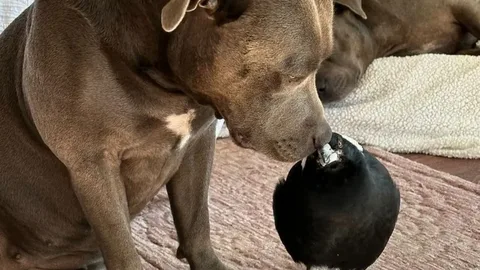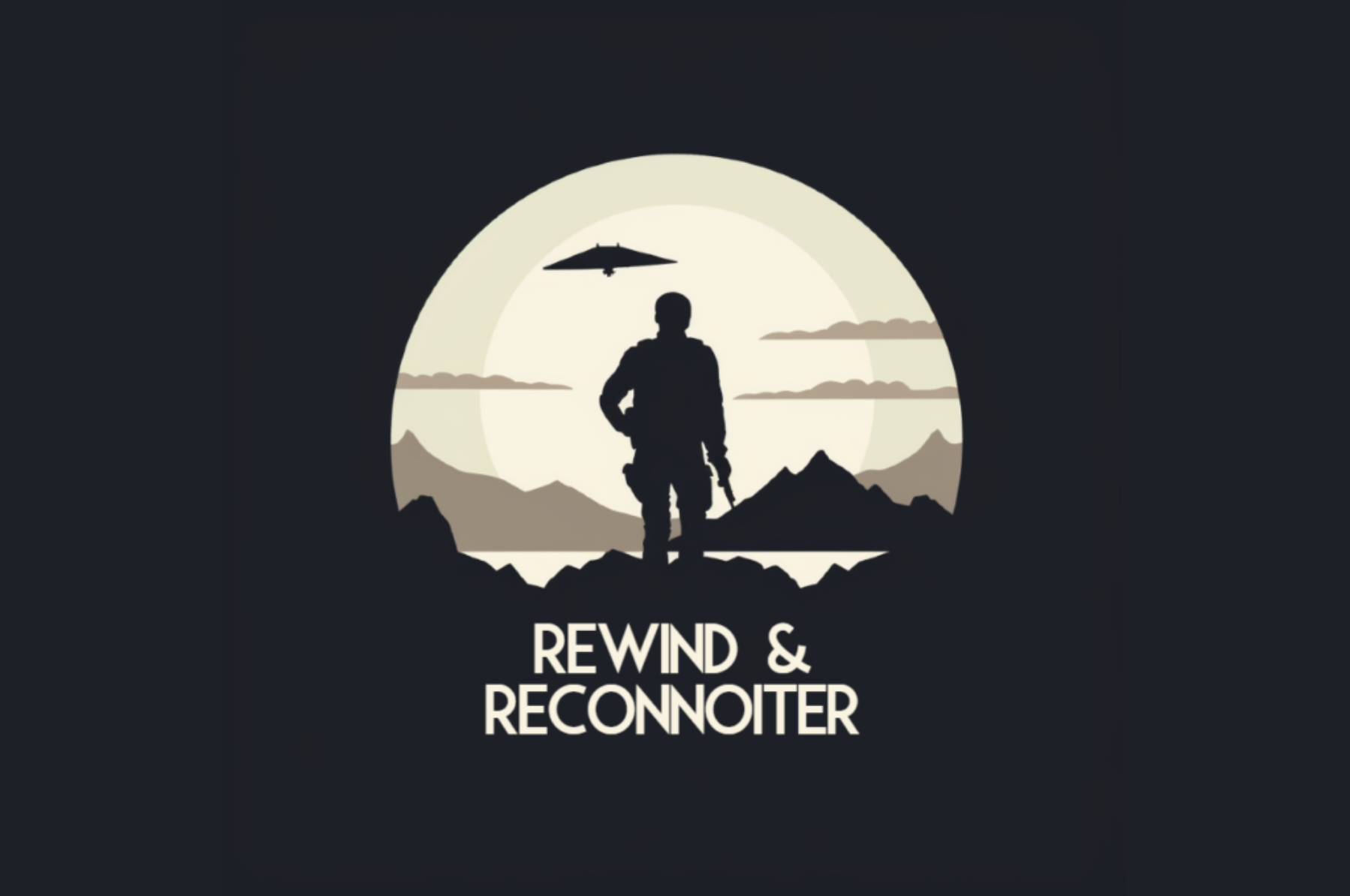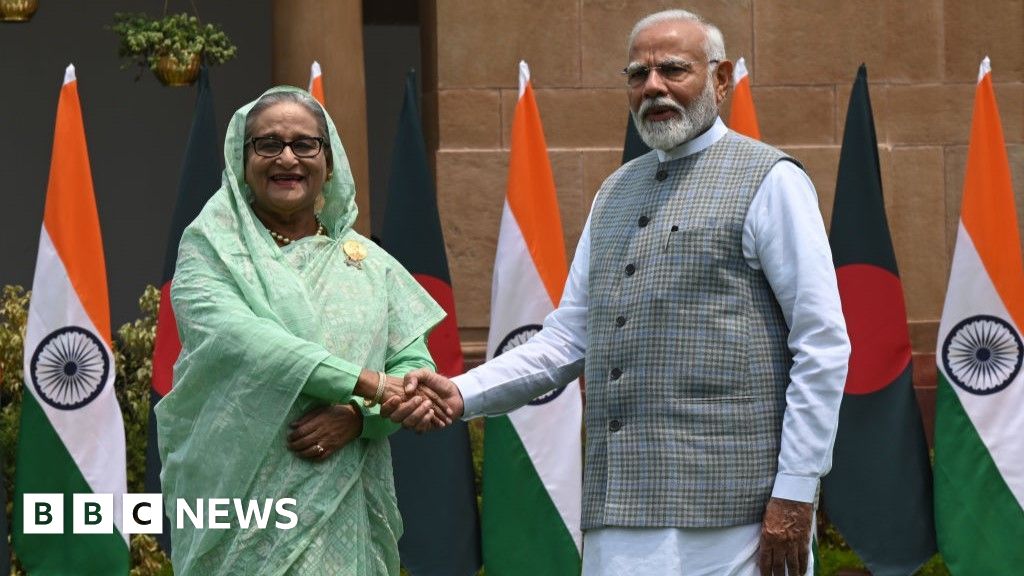An Unlikely Friendship: Peggy and Molly
For four years, Peggy, a Staffordshire bull terrier, and Molly, a magpie, formed an unlikely friendship that captured the hearts of millions online. Despite their differences, the duo amassed nearly two million followers on social media platforms like Instagram and Facebook, captivating audiences with their heartwarming bond. Separation Announcement Sparks Outrage In a poignant video […]

For four years, Peggy, a Staffordshire bull terrier, and Molly, a magpie, formed an unlikely friendship that captured the hearts of millions online. Despite their differences, the duo amassed nearly two million followers on social media platforms like Instagram and Facebook, captivating audiences with their heartwarming bond.
Separation Announcement Sparks Outrage
In a poignant video shared by Peggy’s owners, Juliette Wells and Reece Mortensen, the heartbreaking news of Peggy and Molly’s separation was revealed. The decision stemmed from complaints received by the Department of Science and Innovation (DESI), prompting outrage from fans who felt that bureaucracy had trumped compassion.
Bureaucratic Hurdles vs. Animal Welfare
While supporters rallied behind Peggy and Molly, DESI defended its actions, citing legal concerns about Molly’s status as a wild animal kept without proper authorization. According to DESI, rehabilitation guidelines mandate that wild animals should not associate with domestic ones due to potential stress and health risks.
Peggy and Molly: Molly’s Rescue and Domestication
The story of Peggy and Molly began when Wells discovered the abandoned magpie in a local park. Concerned for the bird’s safety among off-leash dogs, Wells and Mortensen took Molly in, intending to rehabilitate and release her back into the wild. However, Molly’s bond with Peggy grew strong, leading her to remain with the family instead of returning to her natural habitat.
From Social Media Stardom to Controversy
Peggy and Molly’s journey from an Instagram sensation to a legal controversy reflects the complexities of wildlife rehabilitation and domestication. While their online presence garnered widespread adoration, it also raised concerns among wildlife officials about the potential consequences of glamorizing the domestication of wild animals for profit.
Calls for Reunion and Legal Challenges
In response to Molly’s removal, Wells and Mortensen launched an online campaign urging authorities to reunite the inseparable pair. Their petition garnered tens of thousands of signatures, emphasizing the public’s desire for Molly’s return to her adopted family. However, DESI maintains that Molly’s habituation to human contact precludes her release back into the wild.
Navigating Legal and Ethical Dilemmas
The case of Peggy and Molly highlights the delicate balance between wildlife conservation, animal welfare, and human intervention. While the couple’s initial intentions were rooted in compassion, their actions inadvertently sparked a debate about the ethics of domesticating wild animals. Wildlife experts emphasize the importance of respecting legal regulations and considering the long-term welfare of animals like Molly.
Seeking a Resolution
As Peggy and Molly’s story continues to unfold, the focus remains on finding a resolution that prioritizes Molly’s well-being while addressing the concerns of all involved parties. While legal constraints complicate the situation, advocates hope for a compassionate outcome that honors the bond between Peggy and Molly while upholding wildlife protection laws.
Navigating Legal and Ethical Dilemmas
The case of Peggy and Molly brings to light a multitude of legal and ethical considerations surrounding wildlife conservation and animal welfare. While Peggy and Molly’s friendship captured the hearts of millions, it also exposed the complexities of human intervention in the lives of wild animals. Wildlife rehabilitation experts stress the importance of adhering to legal regulations and ethical guidelines to ensure the well-being of both animals and ecosystems.
Balancing Human Compassion and Wildlife Protection
At the heart of Peggy and Molly’s story lies a tension between human compassion and wildlife protection. While Juliette Wells and Reece Mortensen’s decision to rescue and care for Molly was motivated by empathy, it inadvertently led to legal repercussions due to Molly’s status as a wild animal. Wildlife protection laws exist to safeguard the integrity of ecosystems and prevent the exploitation of vulnerable species, highlighting the need for careful consideration in cases of animal rescue and rehabilitation.
The Role of Education and Awareness
The controversy surrounding Peggy and Molly underscores the importance of education and awareness in promoting responsible interactions with wildlife. Public outreach efforts aimed at informing individuals about the legal and ethical implications of wildlife rescue and domestication can help prevent similar situations in the future. By fostering a deeper understanding of the complexities involved in wildlife conservation, society can work towards more sustainable and ethical approaches to animal welfare.
Supporting Wildlife Rehabilitation Efforts
While Peggy and Molly’s story has sparked debate and controversy, it also sheds light on the critical work of wildlife rehabilitation centers and organizations. These facilities play a vital role in caring for injured and orphaned animals, providing them with the necessary support to return to their natural habitats whenever possible. By supporting wildlife rehabilitation efforts through donations, volunteer work, and advocacy, individuals can contribute to the protection and preservation of wild animal populations.
Exploring Alternatives to Domestication
In light of the legal and ethical challenges posed by the domestication of wild animals, it is essential to explore alternative approaches to wildlife rescue and rehabilitation. Initiatives focused on habitat preservation, species conservation, and community engagement offer sustainable solutions to safeguarding wildlife populations and their natural environments. By prioritizing the protection of wild animals in their natural habitats, society can mitigate the risks associated with domestication and promote coexistence between humans and wildlife.
A Call for Collaboration and Dialogue
The case of Peggy and Molly highlights the need for collaboration and dialogue among stakeholders involved in wildlife conservation and animal welfare. By bringing together government agencies, wildlife experts, advocacy groups, and the public, meaningful solutions can be developed to address complex issues such as wildlife rehabilitation and domestication. Through open and constructive communication, stakeholders can work towards shared goals of protecting wildlife while respecting ethical and legal principles.
Conclusion: Finding Common Ground
As Peggy and Molly’s story continues to unfold, it serves as a reminder of the intricate relationship between humans and the natural world. While their friendship has sparked controversy and debate, it also offers valuable lessons about compassion, responsibility, and the importance of ethical decision-making in wildlife conservation. By striving to find common ground and balance competing interests, society can work towards a future where humans and wildlife coexist harmoniously, respecting each other’s rights and preserving the beauty and diversity of the natural world.
The tale of Peggy and Molly serves as a poignant reminder of the complexities inherent in human-animal relationships. While their friendship brought joy to millions, it also sparked important conversations about wildlife conservation, rehabilitation, and responsible pet ownership. As society grapples with these challenges, the enduring bond between Peggy and Molly serves as a testament to the power of compassion and companionship across species boundaries.















